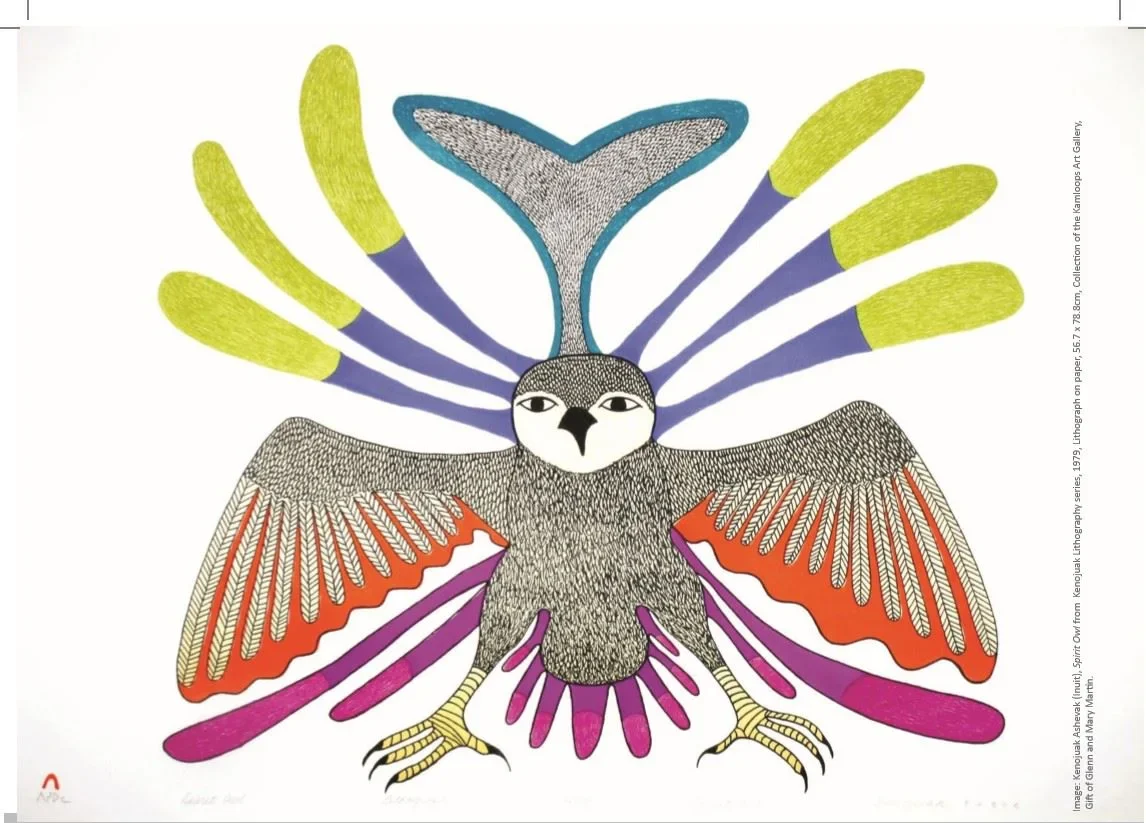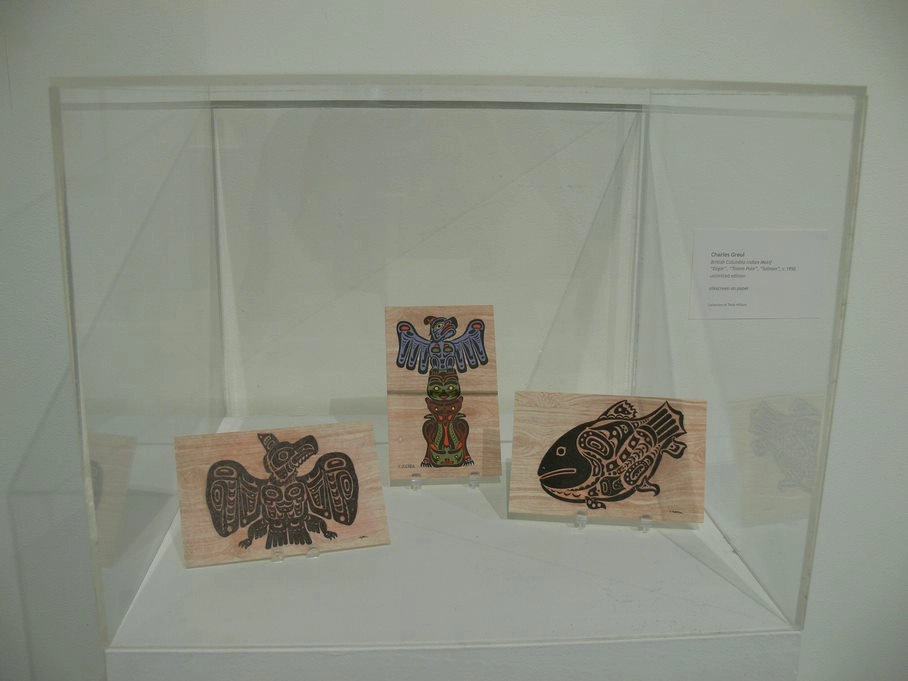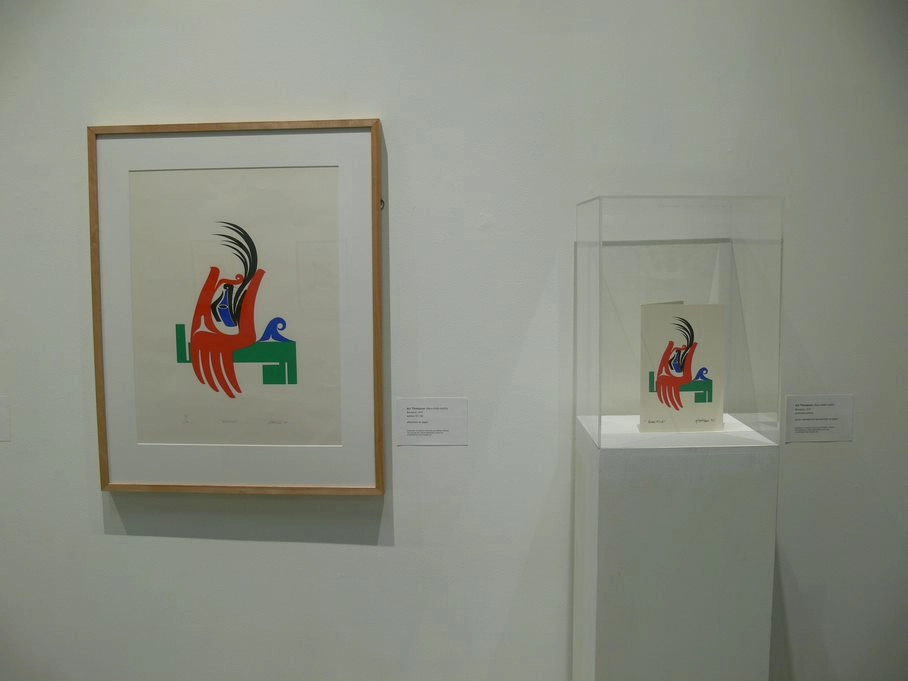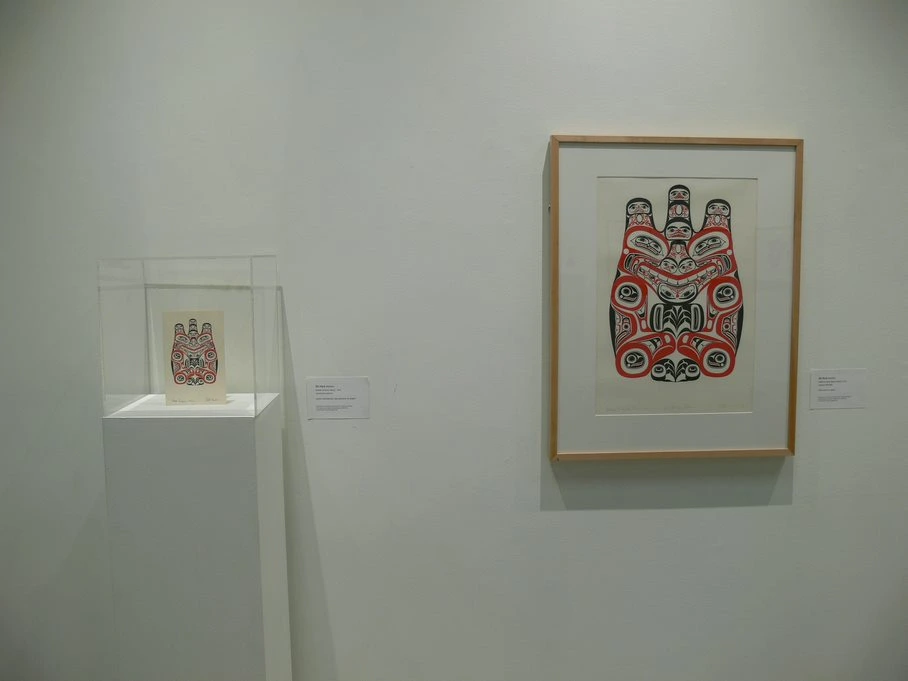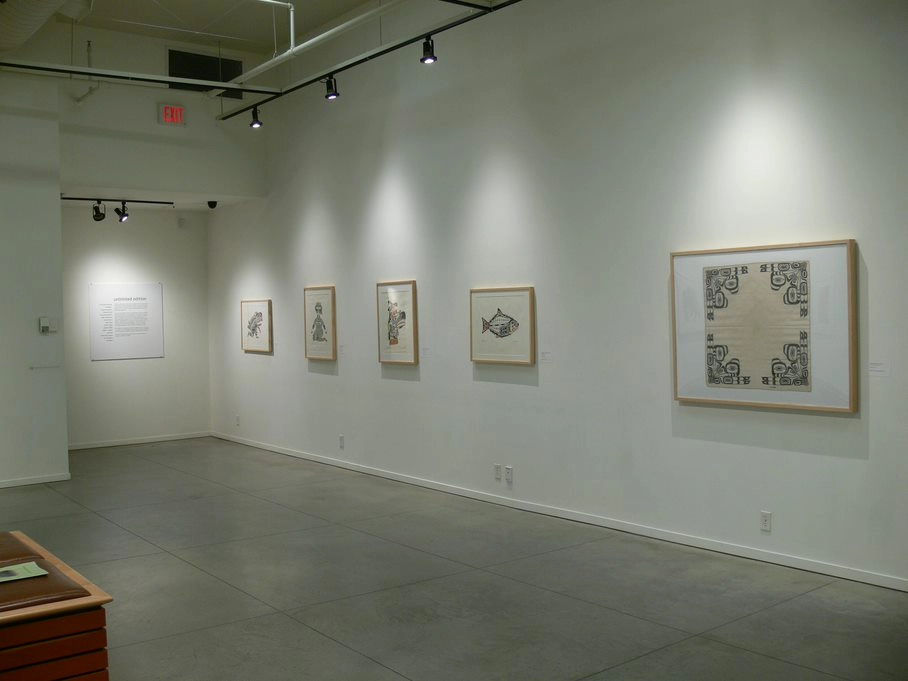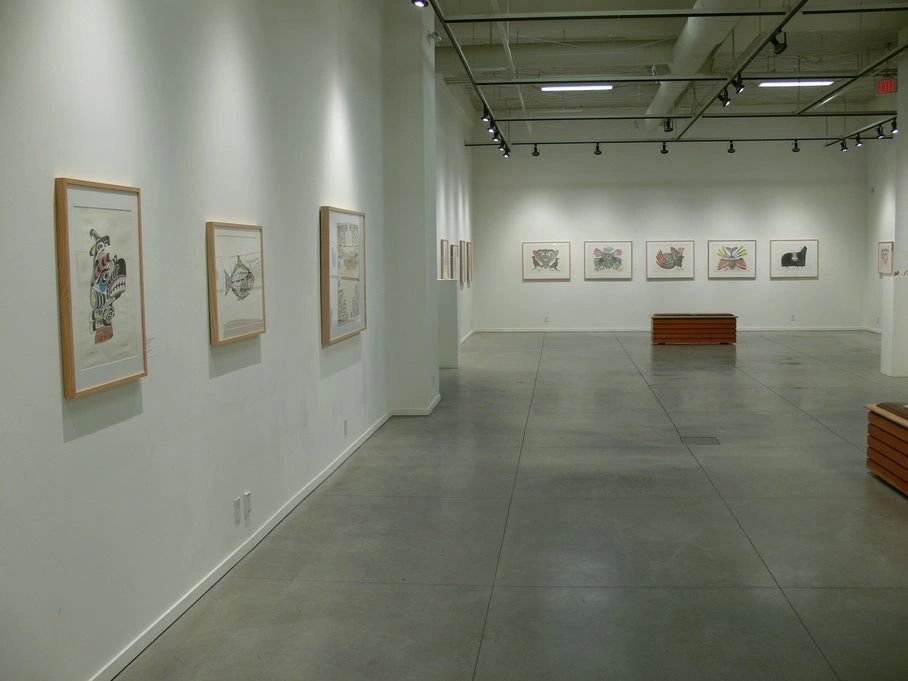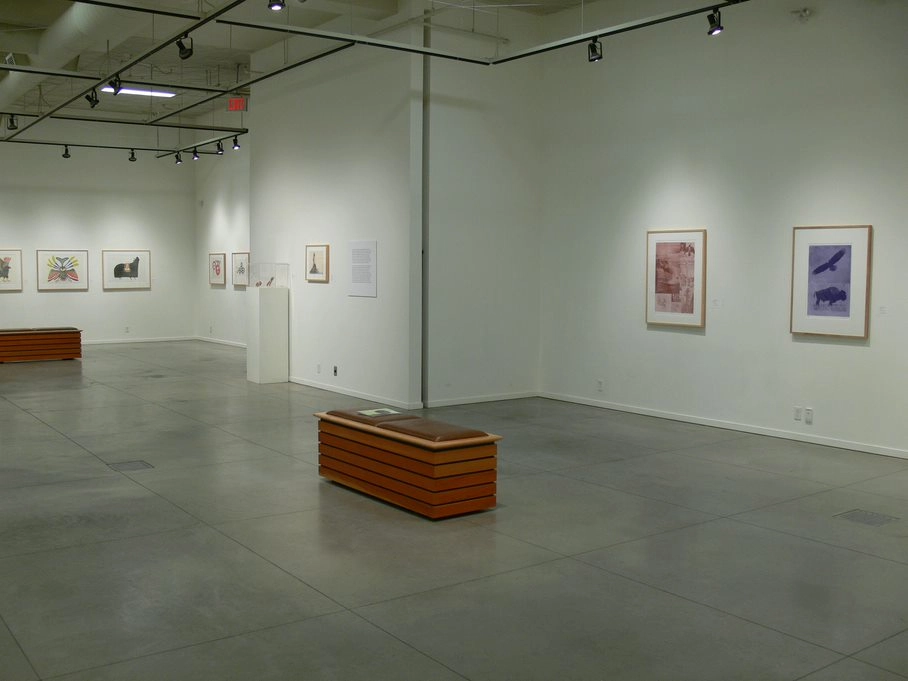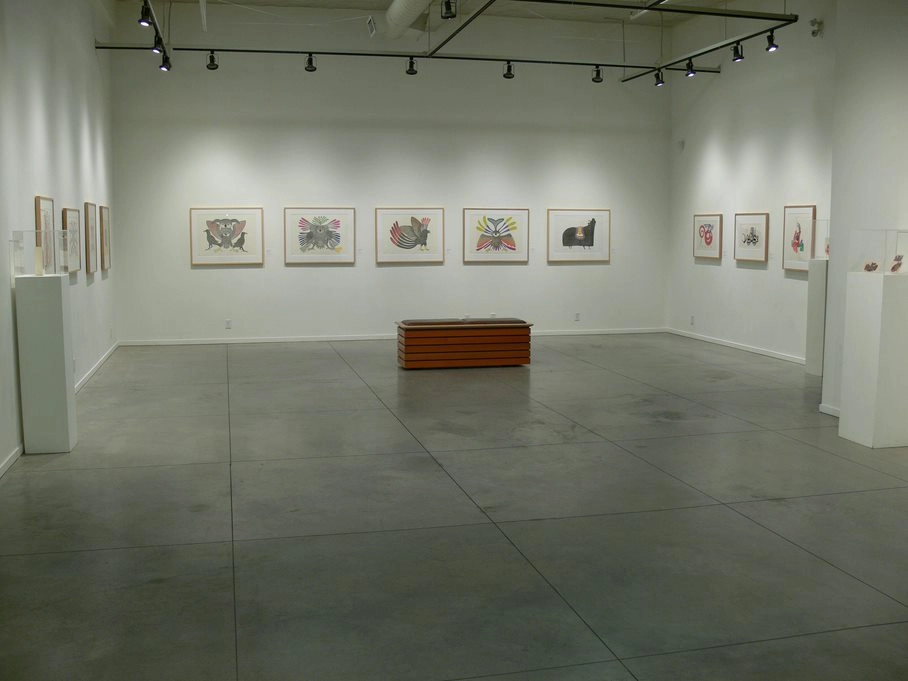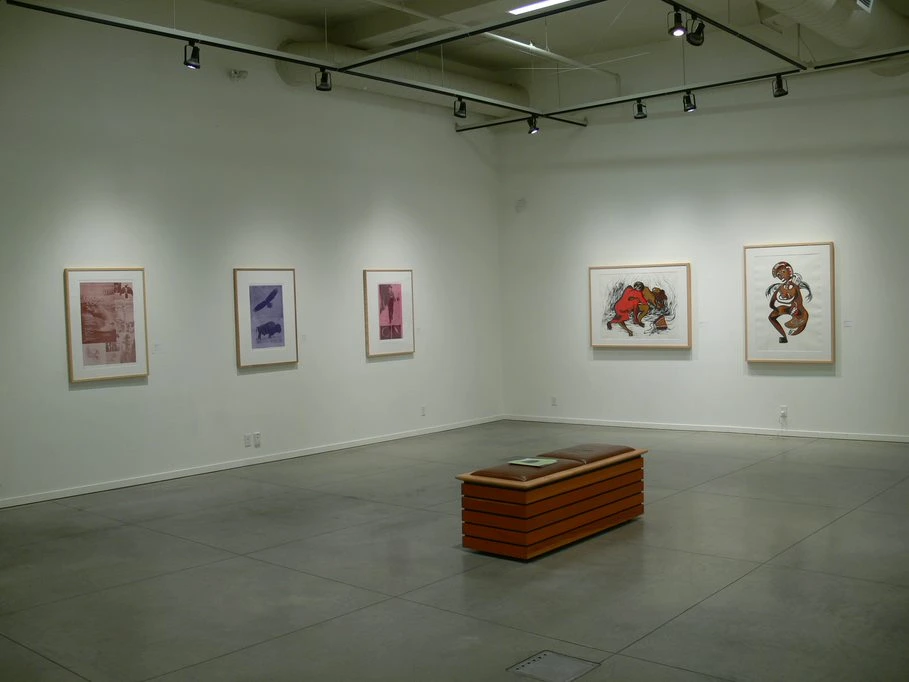Curated by Tania Willard, on loan from the Carleton University Art Gallery and Royal BC Museum
Kenojuak Ashevak, Carl Beam, Robert Davidson, Ron Hamilton, Mark Henderson, Richard Hunt, Fred Johnson, Henry Napartuk, Ellen Neel, Ed Archie Noisecat, Daphne Odjig, Oppie Oppenheim, Walter J Phillips, Pudlo Pudlat , Bill Reid, Chief Henry Speck, Art Thompson, Art Wilson
unlimited edition looks at how prints by indigenous artists represented in the Kamloops Art Gallery’s permanent collection, supplemented by works on loan from the Carleton University Art Gallery and the Royal BC Museum, represent a drive to preserve, portray and popularize oral histories and address social inequities.
The medium of printmaking is the method many people in the ‘old world’ encountered their first images of the Americas. The European practice of depicting fantastical and mythical creatures characteristic of works in the Beautiful Monsters exhibition was intertwined with early scientific views of the ‘New World’ as well as with anxiety about the unknown. For example, sea monster illustrations in early map-making mark out areas that remained unknown to Europeans.
Historical ways in which the “New World” was depicted are reference points for understanding the use and proliferation of printmaking by Indigenous artists since the early 1950s. These artists saw printmaking as a new way to challenge social conditions and give voice to ancestral knowledges and stories.
The title of the exhibition refers to the production of prints in unlimited editions for distribution to a broad audience. In many ways, this practice, while quickly revised to accommodate the fine art market with limited editions, contributed to the revival of Indigenous aesthetics both in Inuit communities in the North as well as the Northwest Coast. Historical threads in the exhibition trace the advent of Northern graphic and print centres to Cape Dorset and the emergence of screenprinting to the Northwest Coast.
Printmaking as a contemporary medium for Indigenous artists can be seen as creating critical spaces between new technology, material and medium for the articulation of established Indigenous aesthetics and narratives.
Curated by Tania Willard (Secwepemc Nation), Aboriginal Curator in Residence, Kamloops Art Gallery
